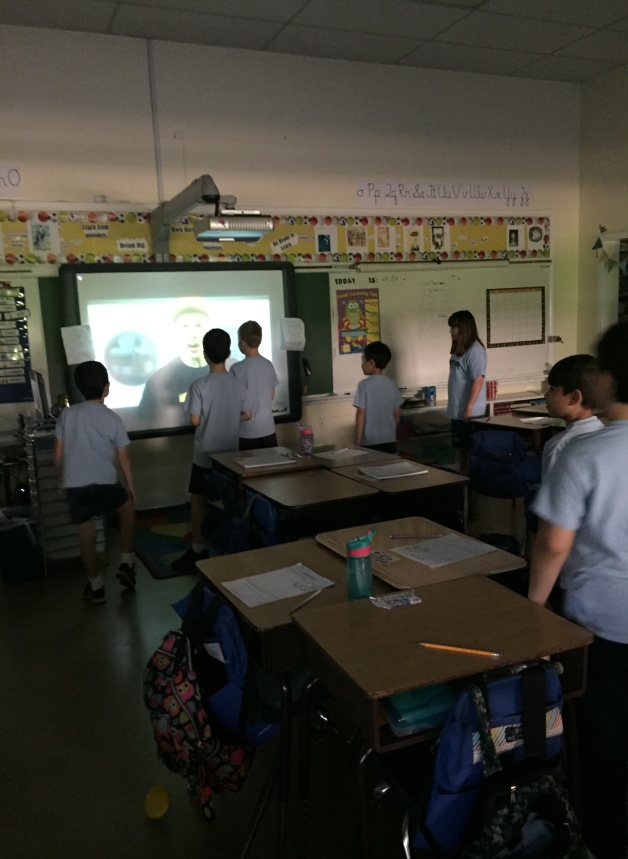This article was contributed by Katie Shahin, 3rd Grade Teacher at St. Ann Catholic School in Arlington, VA.
I love the end of the school year! My students are fully engaged and have zero behavioral issues!” said no school teacher ever. Enter my life-saver!
Trying to keep students engaged and on track during the school year is always challenging. This task becomes even more difficult as springtime rolls around, due to the looming presence of summer vacation and even weather-related schedule changes. (In my case, springtime rain and cold forced me to contain my twenty-one third graders for indoor recess for nearly three weeks. We also ended up having almost two weeks’ worth of snow days in late January.) In times like these, I am ever thankful for alternative learning activities like Brain Breaks. Some of you may be familiar with the concept of Brain Breaks, which are quick activities that give children a break from traditional learning (sitting at their desks and going through lessons in succession) and allow them to get up and move around or talk with each other on a certain insightful topic.
Some behavioral benefits of allowing students to move during a brain break are that they are able to move around, be appropriately goofy, and have better sense of self. Students know to do a check with their arms where they make sure they aren’t touching anyone and are, generally, good at moving if they need to. Students who really crave the chance to be silly or talk with a neighbor are able to do it without getting in trouble.
Since the first day of school this year, I have largely used a website called GoNoodle for these activities, which has definitely saved my sanity. (Important disclaimer: I am not in any way paid or sponsored by GoNoodle; this was just one of the sources of material that I found especially helpful in my classroom, and will therefore be mentioned in this article.) I have a very active set of kids, and a few who need to be more active to facilitate their learning. GoNoodle has a variety of videos on sports, dancing, or just goofy activities that save my kiddos’ brains from classroom overload by getting them up and moving out of their desks in a controlled fashion. This has definitely helped my students be more ready to focus on their next regular classroom lesson. I have even found some videos that incorporate material from their regular curriculum. The best part of these videos? The students don’t even realize they’re practicing their normal lessons because they are having too much fun!

Another fun Brain Break activity is a kid-style version of “Would You Rather?”; in this activity, the students have the opportunity to get to know students around them and share what they discussed. This is a perfect activity for those two short minutes where the students need to talk about something other than multiplication facts. These activities can also be done while standing in line, waiting for an event, or bathroom breaks.
During standardized testing or the days when new vocabulary is introduced, students also like to do Body Spelling. Another teacher had told me about the benefits of using Body Spelling especially with younger students. Letters that are tall, like l, k, or t, students reach up above their heads. For letters that are medium, like m, e, or n, they put their hands on their hips. For letters that drop down, like j, p, or q, Students touch their toes or squat down. A benefit of this is that students are able to practice the spelling orally and audibly.

I am a huge advocate for finding ways to allow my students to get out of their seats and work together especially after seeing how employing these activities has helped improve my students’ focus, learning ability, and classroom enjoyment. Not only does it make the students happier but it can also help me get a chance to be silly with them and show how important it is to move around. I definitely feel that these activities I have used in the classroom have been essential in keeping my students interested each day and keeping many behavioral problems at bay. It encouraged me to reach out of my comfort zone as a teacher and throw aside preconceived notions that students had to sit in their desks and be still every day.